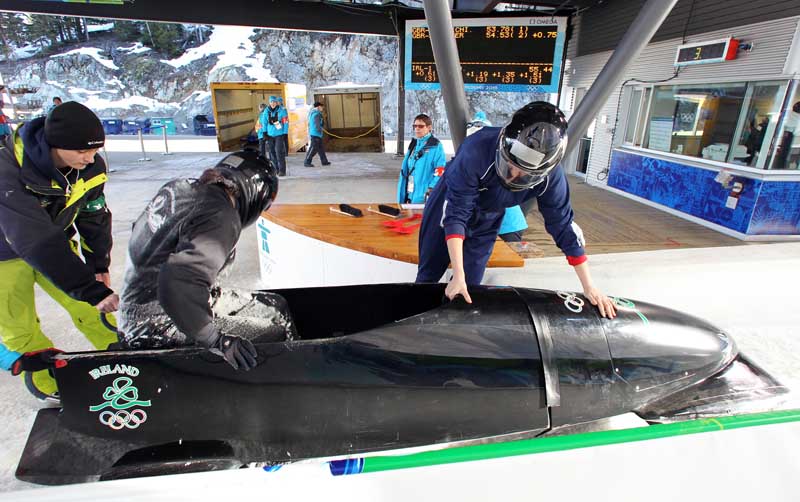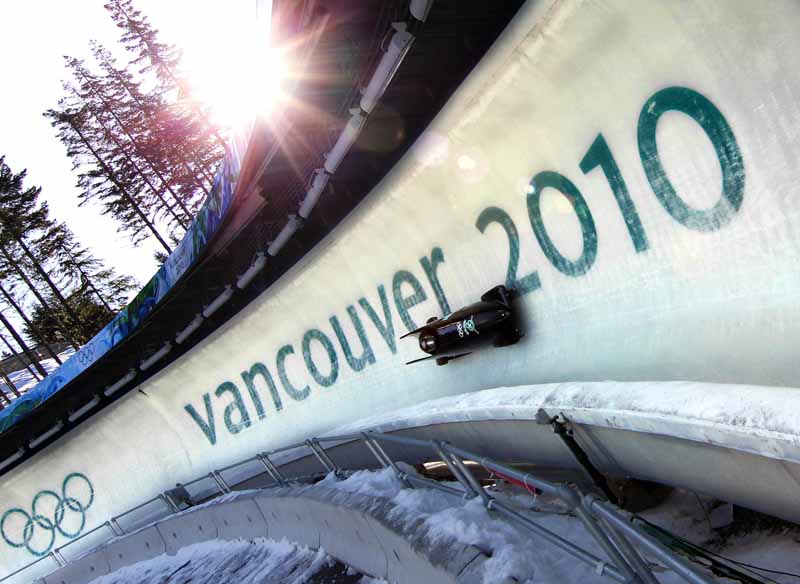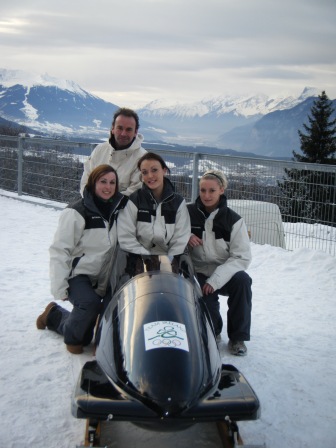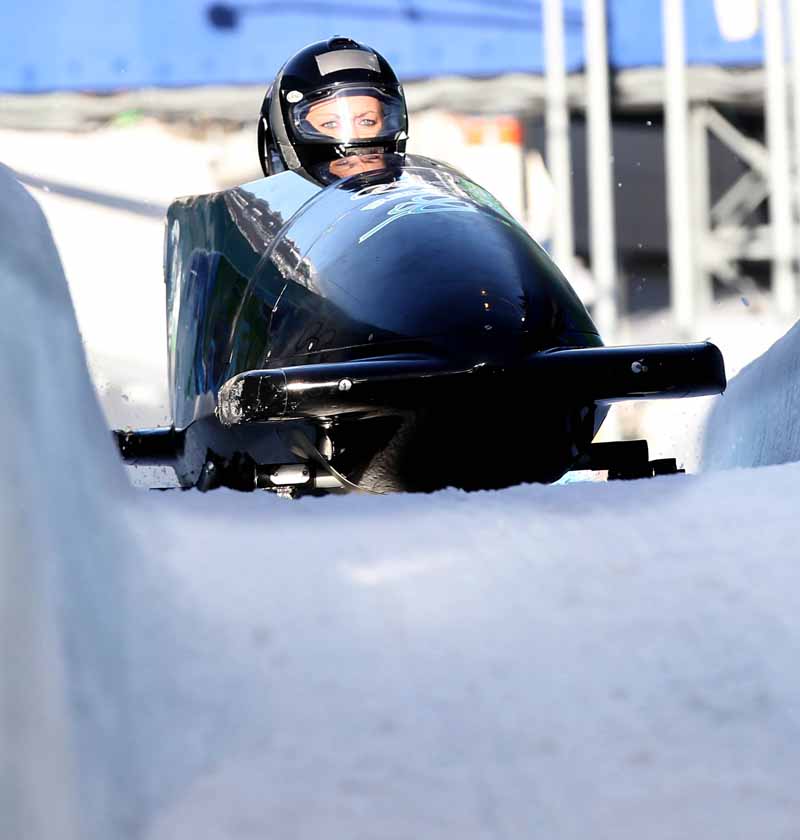Here is some background information to the sport illustrated by recent photographs of Aoife Hoey and Claire Bergin in practice. (Courtest of Presseye’s Wiliam Cherry)
Today’s bobsleigh is built to be fast and aerodynamic, with a rounded fibreglass nose and four highlypolished steel runners. To start, the racers push off as fast as they can for approximately 50 metres, then jump into the bobsleigh for a seated descent down the track.
The driver steers down the track, while, at the end of the run, the brakeman stops the sled.
There are three Olympic bobsleigh events: the men compete in two-and four-man bobsleigh and women in a two-person format.
In all Olympic Games events, four heats are held over two days, with medals being awarded to the team with the lowest combined time, measured to 0.01 of a second.
Bobsleigh athletes (bobsledders) slide at least two to three runs on a track nearly every day during the competitive season. They also have intense strength training and sprinting sessions during the off-season in order to build the power required for the push start — the most important part of the run.
Training sessions are an important time for bobsledders to become comfortable with their equipment, the team and the feel for a track.
Athletes must become familiar with their equipment by also participating in mechanical changes when the mechanic is making adjustments to the bobsled.
The more runs they practice, the better they’ll know the variables that work best. From there, the athletes can tweak the equipment to what’s optimal for the crew, depending on the track.
Identifying the crew
Different members of a bobsleigh crew bring different strengths and expertise. The crew’s individual roles are often identified during practice.
In the four-man bobsleigh, the two middle athletes, known as pushers, are typically the strongest and most powerful of the crew but after the start, when the crew is loaded, these athletes focus on being motionless.
Maintaining a good line, the driver steers the sled. The brakeman is usually the fastest athlete on the sled, and gets in the sled last. He also has the responsibility of braking at the end of the run.
Off-season
During the off-season, bobsledders build up a base of strength and sprinting, perfecting their technique for each. They also use this time to even out muscle imbalances that they may have developed during ice training sessions.
In the weight room, the focus is mostly on lower body strengthening which includes many power cleans, squats and hurdle jumps, but also abdominal, core exercises and some upper body strengthening.
On dry land, bobsledders are sprinters and they train by running 30- and 60-metre intervals from either a standing or flying start — it’s a base measurement for improvement and a great targeted workout.
Whenever possible, bobsleigh crews practice their push start on a short indoor ice track to keep their technique sharp.
Here are some examples of sports terms you will here over the next few days:
Brakeman
The last teammate to enter the bobsled at the start of the race. He/she is responsible for pulling the brake to stop the sled at the end of the run.
Driver
The first person to enter the sled at the start, this athlete sits at the front of the bobsled and steers.
G-Force
Gravitational force that holds the sled and athletes on the wall of a banked turn. A G is equal to the force of gravity.
Kreisel
From the German word for circle, this refers to a turn on a course that loops underneath or above to form a circle. The Whistler Sliding Centre track does not have a kreisel.
Labyrinth
A stretch of track made up entirely of a series of left and right curves with no straight sections in between.
Line
The precise path or the optimum trajectory of the sled. The driver can achieve a good race time by keeping to the trajectory.
Lip
A protective barrier at the top of the sliding track.
Loading
The process of athletes entering the sled after the push start.
Omega
A curve on the track shaped like the letter Omega in the Greek alphabet.
Push
The sled is pushed as hard as possible over a 50 to 60-metre stretch to provide momentum at the start.





